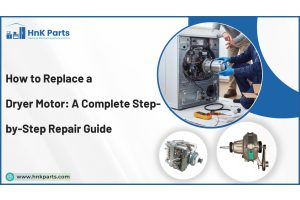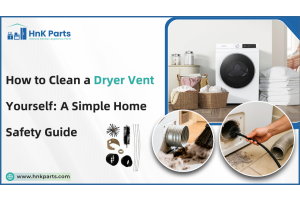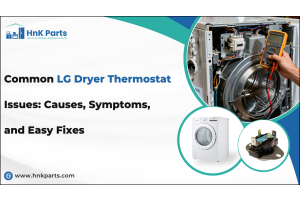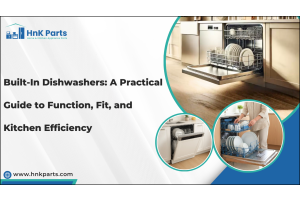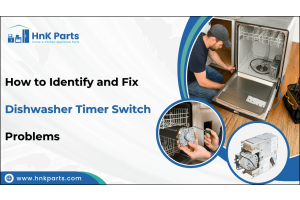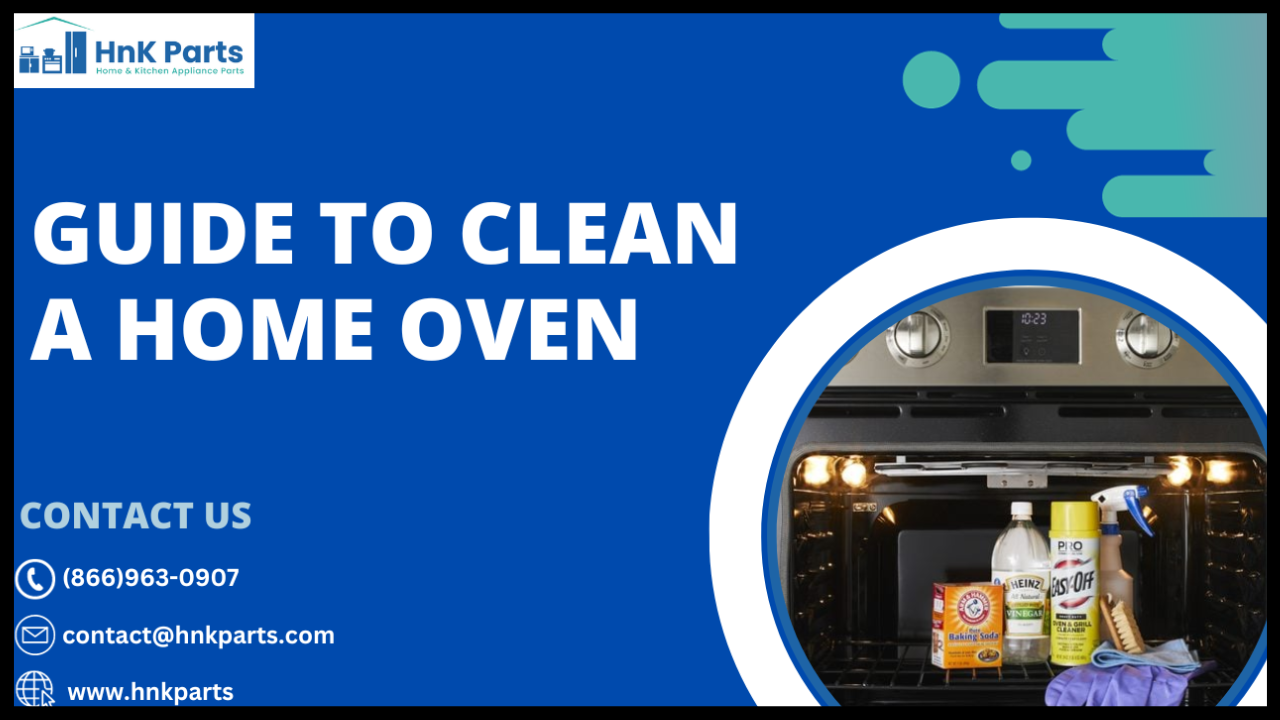
A complete guide on how to clean an oven: Different methods to clean an oven.
Cleaning your oven is essential for several reasons. It ensures that your oven operates efficiently, as built-up grease and food residue can hinder its performance and even cause smoke or unpleasant odors. Regular cleaning prevents the accumulation of burnt-on deposits, which can become a fire hazard over time. If you use your oven frequently, especially for roasting, broiling, or cooking dishes that may produce more splatters and drips, it's advisable to clean it monthly or as needed. Regardless of usage frequency, it's a good practice to clean up spills and drips inside the oven as soon as they occur. Cleaning your oven benefits in extending the appliance's lifespan, saving you money on repairs or replacements. A clean oven enhances your kitchen's overall aesthetic and hygiene, making it a more pleasant and functional space.
Why is it important to clean a commercial oven?
Safety for food being cooked in the oven: A variety of dishes are cooked in a commercial oven which leaves behind a lot of food debris and residue which leads to grease and oil spills on the oven and makes it untidy to cook on.
Incremented efficiency: More cleaner the oven more efficient cooking can be experienced. Accumulation of debris grease and leftovers can affect the performance and may lead to undercooking of dishes or taking longer time for the food to cook.
Fire hazard safety: The gathering of grease and food debris or leftovers in the oven rack may lead to fire jeopardy inside the oven. These components are flammable and may cause a kitchen fire.
Odor management: Cooking various types of dishes in the same oven, can contribute to emitting unpleasant odors from the oven. Regular cleaning may help in controlling the odors and maintaining the oven from undesirable smells.
Extend the lifespan of the oven: Cleaning the oven contributes to extending the performance and life of your appliance. Brushing off the food debris and oil and grease residues from the oven maintaining the inner components and cleaning them with care also ensures the prolonged performance of the appliance.
Standard of the food: A clean and tidy oven helps maintain the quality of the food. Getting rid of the grease and oil build-up from the oven contributes to the cooking quality of food and avoids unpleasant flavors getting into the food you cook.
How often should you clean your oven?
It's essential to address spills and drips as soon as they happen to prevent them from hardening and becoming more challenging to clean later. You can use oven-safe liners or mats to catch spills and make cleanup easier.
- Light usage: If you use your oven infrequently or for simple tasks like reheating food, you can probably get away with cleaning it every 3-6 months.
- Regular usage: For ovens that see more frequent use, such as baking or roasting several times a week, it's a good idea to clean them every 1-3 months.
- Heavy usage: If you do a lot of cooking, especially at high temperatures that can result in spills and splatters, you may need to clean your oven every 2-4 weeks to prevent a buildup of grease and food residue.
Signs that you need to clean your oven
Knowing when to clean your oven is essential to maintaining its efficiency and safety.
- Noticeable food buildup: If you see visible food debris, grease, or spills on the oven's interior surfaces, it's a clear sign that cleaning is needed.
- Unwanted smoke and odors: If you notice smoke or unpleasant odors when you use your oven, it could be due to food or grease buildup burning off. This is a strong indicator that cleaning is pending.
- Irregularly cooked food: If your oven isn't heating evenly or if your food is cooking unevenly, it could be because of food residue or grease affecting the heat distribution.
- Excessive smoke during self-cleaning: If you have a self-cleaning oven and notice excessive smoke or a strong burning smell during the cleaning cycle, it may be because of a significant buildup that needs to be addressed.
- Unpleasant smells: Lingering and unpleasant odors from past cooking sessions that don't go away can be a sign of residue buildup in the oven.
- Poor baking results: If your baked goods aren't turning out as expected, it could be because of accumulated residue affecting the oven's temperature accuracy.
- Sticky or greasy oven door: If the oven door feels sticky or greasy when you touch it, it's a sign that grease and residue have accumulated on the exterior. Get rid of it as soon as possible.
Different methods to clean an oven
There are a variety of methods on how to clean your oven, based on the type or model of your oven that you are using. The different types of processes on how to clean the type of oven you have been using:
Commercial oven cleaners:
Purchase a commercial oven cleaner from a store. Allow the solution to soak or sit on the appliance for a longer time to loosen the dirt and grease. Wipe using a soft and damp paper tissue or a mild non-abrasive cloth.
Natural oven cleaners:
Create a natural oven cleaner by mixing baking soda and water to make a paste. Apply the paste to the interior surfaces of the oven, except on sensitive inner components. Use a damp cloth or sponge to scrub away the paste and residue.
Vinegar and water:
Mix equal parts of water and white vinegar in a sprinkler. Spray the solution onto the oven's interior and allow it to sit for 30 minutes approx. Wipe away the solution using a damp non-abrasive cloth.
Self-cleaning oven:
If your oven has a self-cleaning feature, refer to your oven's user manual for instructions. The self-cleaning cycle heats the oven to high temperatures to burn off food residue. After the cycle, you can wipe away the ash.
Professional oven cleaning services:
If your oven is heavily soiled or you prefer not to clean it yourself, you can hire a professional oven cleaning service. They use specialized equipment and cleaning agents to thoroughly clean your oven.
What is the best way to clean an oven?
As we have already seen a few different types of cleaning an oven thoroughly, now to decide on what is the best and most effective way of cleaning an oven is, using baking soda and a mixture of diluted white vinegar. So we will be taking a look at how to carry out the process of cleaning the oven using this method later in this blog.
Gathering necessary tools and supplies to clean an oven
Cleaning an oven can be a dirty and challenging task, but having the right tools and supplies can make the job much easier.
- Rubber gloves: To protect your hands from harsh cleaning chemicals and hot surfaces.
- Safety goggles: Protect your eyes from any cleaning chemicals or debris that may splash during the cleaning process.
- Oven cleaner: You can use a commercial oven cleaner or make a natural one using baking soda and vinegar. Follow the product's instructions for the best results.
- Baking soda: A versatile and effective natural cleaner that helps remove stubborn stains and grease.
- White vinegar: A natural acid that helps break down grease and grime.
- Scrubbing pads or sponges: Non-abrasive scrubbing pads or sponges are suitable for cleaning oven surfaces without scratching them.
- Plastic or rubber scraper: To gently remove baked-on food residue without damaging the oven's interior.
- Old towels or rags: For wiping down surfaces and cleaning up spills.
- A Bucket or large bowl: A bucket or a bowl used for holding the cleaning solutions.
Steps to clean your oven
Cleaning an oven can be a bit of a chore, but by following these steps, you can effectively clean it and remove built-up grease and food residue. A step-by-step guide on how to clean an oven:
Assemble your supplies:
Gather all the necessary supplements and tools that are fit for cleaning the oven effectively such as gloves, safety goggles for protection, cleaning solutions, white vinegar, and baking soda.
Cooling down the oven:
Switch off the oven and let it cool down to prevent any accidents.
Disengage the racks:
Remove the oven rack from the interior of the oven. So that you can clean them separately.
Brush off the food debris:
Brush off the debris using a plastic scraper. It is important to remove debris from the oven before cleaning to avoid any inflammable casualties.
Apply the cleaning solvent:
After brushing off the debris, apply the cleaning solution or the baking soda paste that you have made at home. Gently apply on the interior surface of the oven. Avoid contact of the solution with electric or inner components that are sensitive to any external agent exposure, which can lead to damage to the component.
Scrubbing the applied solvent:
After letting the solution sit on the surface and loosening the debris and grease gently wipe or scrub them using a non0-abrasive material. You may need to put some extra effort into areas with huge grease build-up. Rinse and wipe down the surfaces simultaneously in warm water as you work.
Reassemble the parts:
After the whole cleaning process, reassemble the rack and other components back in the oven, for testing the oven and checking for any incomplete process that needs to be redone.
Testing the oven:
After re-assembling the components, dispose of the waste that has been removed, after everything is set, turn back on the appliance to test the appliance whether it is functioning properly.
Click here to learn about the 5 microwave cleaning hacks
How to clean a self-cleaning oven?
Cleaning a self-cleaning oven is a bit different from manually cleaning a traditional oven. Self-cleaning ovens have a built-in cleaning cycle that uses high temperatures to burn off food residue and grease.
- Removing oven racks: Removing the racks before the process is essential to carry out a smooth process so that cleaning them separately in a solution would be easier.
- Inspect the oven: Check the oven's interior for any large pieces of food or visible debris. Remove any loose debris using a plastic or rubber scraper. Ensure that the oven door is tightly closed.
- Select the Self-clean cycle: Locate the "Self-Clean" or "Clean" setting on your oven's control panel. This setting may be labeled differently depending on your oven model.
- Set the cleaning duration: Depending on the level of cleaning required, you can usually select a cleaning duration, such as "2 hours" or "4 hours." The longer the duration, the higher the temperature will be inside the oven, which will burn off more stubborn stains and residue.
- Monitor the process: During the self-cleaning cycle, the oven may produce smoke and odors as it burns off food particles. Ensure good ventilation by opening windows or using exhaust fans to let off the smoke from the oven during the process.
- Cool down: After the self-cleaning cycle finishes, the oven will need time to cool down. This can take several hours, so be patient.
- Reassemble oven rack: Clean off the ashes and any waste from the interior of the appliance. Once the oven is clean and cool, reinsert the oven rack.
How to clean a toaster oven?
Cleaning a toaster oven is essential to maintain its functionality and prevent the buildup of crumbs, grease, and food residue. Cleaning your toaster oven regularly, especially after heavy use, will help maintain its performance and keep it looking clean.
- Gather your supplies: You will need a few supplies for cleaning, including a soft brush or pastry brush, a damp cloth or sponge, mild dish soap, warm water, and a dry cloth or paper towel.
- Remove crumb tray: Most toaster ovens have a removable crumb tray located at the bottom. Carefully slide it out and empty any crumbs into the trash.
- Clean the crumb tray: Wash the crumb tray with warm, soapy water using a cloth or sponge. Rinse it thoroughly, and make sure it's completely dry before placing it back in the toaster oven.
- Remove oven racks and accessories: If your toaster oven has removable oven racks or accessories (e.g., baking pans, trays), take them out and set them aside for cleaning separately.
- Brush out crumbs: Use a soft brush or pastry brush to gently sweep out any loose crumbs and debris from the interior of the toaster oven.
- Wipe down interior: Dampen a cloth or sponge with warm, soapy water (using mild dish soap), and gently wipe down the interior surfaces of the toaster oven.
- Exterior cleaning: Wipe down the exterior of the toaster oven with a damp cloth or sponge to remove any spills, splatters, or fingerprints. Use a dry cloth or paper towel to dry.
- Reassemble and plug-in: Once everything is clean and dry, reassemble the toaster oven by inserting the crumb tray, oven racks, and accessories. Plug the toaster oven back in.
How to clean the outside of an oven?
Cleaning the exterior surface of an oven is a straightforward task that can help maintain the appearance of your kitchen appliance. The exterior surface of your oven regularly can help keep it looking clean and free from fingerprints, grease, and other residues. Depending on the type of oven you have and how frequently it's used.
- Safety precautions: Ensure the oven is completely cool and turned off before you begin cleaning. For safety reasons, unplug the oven from the electrical outlet. Prepare a bucket full of soapy solution to wipe the exteriors.
- Wiping the exterior: Dip a soft cloth or sponge into the soapy water mixture. Gently wipe down the entire exterior surface of the oven, including the front, sides, top, and control panel.
- Rinse with clean water: Rinse the cloth or sponge with clean water and wring it out. Use it to wipe away any remaining soap residue from the exterior surface.
- Getting rid of tough stains: If you encounter stubborn stains or spots, sprinkle a small amount of baking soda onto the damp cloth or sponge. Gently scrub the area with the baking soda to help lift the stains.
- Dry the exterior: Use a dry cloth or paper towel to thoroughly dry the exterior of the oven. This helps prevent streaks and water spots.
- Inspect and reassemble: Inspect the exterior of the oven to ensure it's clean and streak-free. Once you're satisfied, reassemble the parts. Plug the oven back into the electrical outlet and go ahead with testing the oven.
How to clean oven racks?
Cleaning the oven rack can be a heavy-duty task due to the buildup of grease and baked-on food residue. Here are some tips on how to clean oven racks thoroughly.
- Prepare the cleaning area: Lay down old towels or rags in your bathtub or a large basin to protect the surface and catch any drips.
- Remove the oven racks: Take out the oven racks from your oven and place them on the towels or rags in the bathtub or basin.
- Submerge the racks: Submerge the oven racks completely in the oven rack cleaner solution, ensuring they are fully covered. Allow them to soak for at least 4-6 hours or overnight for best results.
- Scrub the racks: After soaking, put on rubber gloves to protect your hands from the grease and grime. Use scrubbing pads or sponges to scrub the racks. Focus on areas with heavy buildup of grease and oily stains.
- Use baking soda: For stubborn stains or baked-on residue, you can make a paste by mixing baking soda and water. Apply this paste to the affected areas and let it sit for a few minutes before scrubbing.
- Rinse and check: Rinse the oven racks thoroughly with warm water to remove any remaining soap, baking soda, and debris. You can use a shower with a pressurized nozzle for thorough cleaning.
- Dry the racks: Pat the oven rack with the help of towels and rags and let them air dry completely before placing them back in the oven and reinstalling the oven racks back into the appliance.
How to clean the glass oven door?
Cleaning the glass oven door is an essential part of maintaining your oven's appearance and keeping it functional. Over time, food splatters and grease can accumulate on the glass, making it look dirty. Here's how to clean the glass oven door:
- Remove the oven racks: Take out the oven racks from your oven and place them on the towels or rags in the bathtub or basin. Lay down old towels or rags in your bathtub to catch any drips.
- Submerge the racks: Fill the bathtub or basin with warm water and add a few drops of dishwashing liquid. Submerge the oven racks completely in the soapy water solution, ensuring they are fully covered. Allow them to soak for at least 4-6 hours or overnight for best results.
- Scrub the racks: After soaking, with the help of scrubbing pads or sponges scrub the racks. Stubborn stains can be removed by making a paste by mixing baking soda and water.
- Rinse and check: Rinse the oven racks thoroughly with warm water to remove any remaining soap, baking soda, and debris. Check to ensure that the racks are clean and free of residue.
- Dry the racks: Dry the racks by leaving them open to air dry or clean them with towels or rags. And refit them to the oven appliance for testing and rechecking for any undone cleansing process.
How to clean oven knobs?
Cleaning oven knobs is a straightforward process that can help maintain the appearance of your oven and ensure the knobs work properly.
Before you start the process, ensure that the oven is completely cool and turned off.
- Unattach the knobs: Carefully pull the oven knobs straight off the control shafts. Be gentle to avoid damaging the knobs or the control shafts.
- Soak the knobs: Place the oven knobs into the soapy water solution. Ensure that they are fully submerged.
- Scrub the knobs: Using a soft cloth or sponge, gently scrub the knobs to remove any grease, grime, or residue. The use of toothbrushes to brush off the debris may also help in effective cleaning.
- Rinse the knobs: Remove the knobs from the soapy water and rinse them thoroughly with clean water to remove any soap residue.
- Dry the knobs: Use a clean, dry cloth to pat the knobs dry or allow them to air dry completely.
- Inspect and reinstall: Inspect the knobs to ensure they are clean and free of residue. Once satisfied, reinsert them onto the control shafts. Ensure they are properly aligned and pushed in.
How to clean oven grates?
- Remove the grates: Ensure that the oven is completely cool and turned off. Carefully remove the oven grates from the oven.
- Soak the grates: Add a generous amount of dishwashing liquid to the water and mix it in. Submerge the oven grates in the soapy water, and soak for at least 30 minutes.
- Scrub the grates: Take one grate at a time and use a scrubbing brush or sponge to scrub away the loosened residue. If the grime is particularly stubborn, you can sprinkle baking soda on it to help with the scrubbing.
- Vinegar solution: Place each clean oven grate inside a separate bag and seal it. Let the grates sit in the vinegar solution for several hours or overnight. This will help dissolve any remaining grease.
- Rinse and dry: Remove the grates from the vinegar solution and rinse them thoroughly with clean water. After air drying the grates, they are ready to be fit in and tested.
Know more about the Parts of an Oven
How to maintain a commercial oven?
A commercial oven is prone to daily use on rigorous terms. These ovens need a thorough check as much as possible or even daily since so much food is prepared throughout the day, and keeping it fresh and clean for the next day of work is very much needed. Here are some effective oven cleaning hacks for a commercial oven:
Daily Check
- Cleaning: After each use, wipe down the interior of the oven with a damp cloth to remove food debris and spills.
- Grease management: Empty and clean the grease trap or tray daily to prevent grease buildup.
- Door gaskets: Check the door gaskets regularly for signs of wear, damage, or looseness. Replace any damaged gaskets promptly.
- Ventilation: Ensure that the oven's ventilation system is working correctly.
Weekly Check
- Deep cleaning: Perform a more thorough cleaning of the oven's interior, including walls, heating elements, and fans. Use appropriate oven-cleaning products.
- Burner inspection: For gas ovens, inspect burners and igniters for clogs or damage. Clean or replace them as necessary.
Monthly Check
- Calibration: Check the oven's temperature accuracy using a thermometer. If there are discrepancies, calibrate the oven according to the manufacturer's instructions.
- Fan and motor inspection: Inspect fans and motors for any signs of wear, unusual noise, or overheating. Lubricate bearings or replace worn components as needed.
Annual Check
- Professional inspection: Schedule an annual inspection by a professional technician to assess the oven's overall condition, safety features, and functionality.
- Gas line inspection: For gas ovens, have a professional inspect the gas lines, connectors, and safety valves to ensure they are in good condition.
- Oven door hinges: Check and lubricate oven door hinges as needed to ensure smooth and secure operation.
Cleaning your oven regularly is essential because it prevents the accumulation of grease, food residue, and burnt-on deposits, which can not only hinder its performance but also lead to energy inefficiency, uneven cooking, and even fire hazards. Moreover, maintaining a clean oven promotes healthier cooking by preventing contamination, enhances the appliance's lifespan, and ensures that dishes are prepared without unwanted flavors or odors. Cleaning your oven offers numerous benefits beyond just hygiene. It ensures that your appliance operates at its peak efficiency, reducing energy consumption and cooking times. It also helps maintain the quality of your dishes by preventing unwanted flavors from contaminating your food.
FAQs
What is the safest way to clean an oven?
The safest way to clean an oven is to use a commercial oven cleaner or a homemade mixture of baking soda and water.
What type of oven is easy to clean?
Self-cleaning ovens are generally easier to clean as they have a high-temperature cleaning cycle that reduces food residue to ash, which can be easily wiped away.
Is it necessary to clean the oven every day?
No, it is not necessary to clean the oven every day. Daily wiping to remove spills and debris suffices for routine maintenance. Deep cleaning can be done periodically, such as every few months.
What product is best to clean an oven?
One of the most effective products for cleaning an oven is a commercial oven cleaner specifically designed for the task. These cleaners are formulated to break down and remove tough grease, burnt-on residue, and food stains.
How does an oven clean work?
A self-cleaning oven uses a high-temperature cycle (usually around 900°F or 475°C) to burn off and reduce food residue and grease to ash. During this process, the oven locks its door for safety, and the residue left behind can be easily wiped away.
Are oven cleaning products safe?
Oven cleaning products are generally safe when used as directed. However, some may contain strong chemicals, so it's essential to follow instructions. For a more natural and eco-friendly option, consider DIY oven cleaners like baking soda and vinegar. Oven glass cleaner


